|
Updated June 21, 2022 Canon's A-Series of 1976-85 was, unquestionably, the most commercially successful lineup in SLR history. In excess of 14 million bodies (divided among six models) were produced. The A-Series came...they saw...they conquered...and then they did what all empires eventually do...slid into oblivion. The AL-1 QF was the final desperate gasp for the chassis, as Canon sought to milk the last drop from its traditionally-styled SLRs, with the oh-so-'80s T-Series waiting in the wings. Along the way, it upheld the lofty A-Series' ideals of bargain-basement battery door latches, consumer-conscious construction, and Canon's time-honored tradition of over-promised performance resulting in mass consignments to drawers, closets, and attics ;-). What's that, your eyes are glazing over already?? Fear not, dear reader...you may well end up having a refreshing power nap before this is all over ;-). 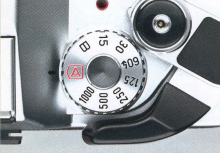 AL-1 Things to Everyone? The key to Canon's A-Series advertising was projecting the cameras as providing pro-level performance and results at consumer-friendly prices. And they were inarguably successful in that endeavor: the AE-1 and AE-1 Program were the two best-selling SLR models in history. But they still failed to address a major bugaboo for non-enthusiasts AKA consumers: Manual Focus. The obvious solution? Auto Focus. Canon's attempted solution with the AL-1? "Quick" Focus - an electronic aid for manual focusing utilizing the Honeywell Visitronic TCL module. Or about half-way to true AF ;-). Basically, Canon took the entry-level AV-1...stuck in the Honeywell module and slapped on an "Action Grip" (that conveniently provided space for the two AAA (LR03) cells required to supply sufficient amperage to the electron-thirsty focus module) and priced it just below the AE-1 Program. The AL-1 did the AV-1 one better by providing an additional Manual exposure mode with seven user-selectable shutter speeds from 1/1000 - 1/15 sec. to go along with the Aperture-priority + Bulb mode of its forebear, providing a bit more flexibility for those so-inclined. Styling and layout was a mix of AV-1 (exposure mode dial, battery check, and backlight compensation button) and AE-1 Program (prism housing, shutter release, film advance lever and rewind lever/ISO dial, and the black sash trim that typified higher-grade models of the era), with the AL-1 also bearing the proud distinction of being the last Canon to sport the sano '60's-era script on its prism housing. 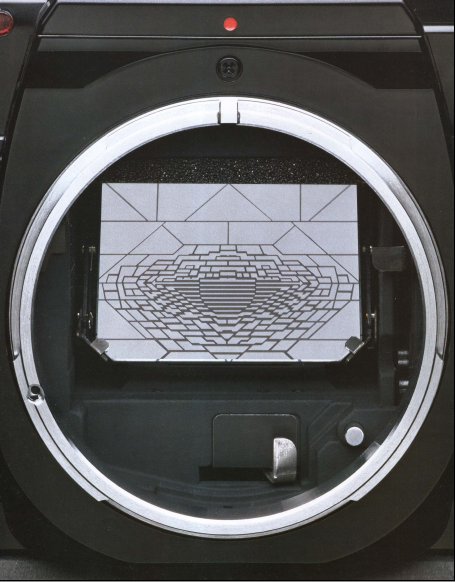 Quirky Features? At first glance, the most notable feature of the the AL-1 would likely be the hand grip, more prominent than on any other A-Series Canon. Sure, the A-1 and AE-1 Program both sported removable plastic Action Grips before the fixed, rubber-coated AL-1 version came along. But they were neither as ergonomic nor as grippy. For me, the AL-1 is the most comfortable A-model to hold and use, by far. But could you call that quirky? Not so much :-). Pop the lens off, however, and it's another story... Like Canon lifted it straight from an Atari game (ET anyone? ;-)), the mirror of the AL-1 still looks pretty funky, even to jaded 21st-century eyes. With its crazy polygon-patterned grid, the mirror packs plenty of quirkiness into the otherwise staid A-platform. But this was definitely a matter more about function than form. The grid grew more concentrated towards the center to direct more light (45%) to a sub-mirror assembly behind the main mirror, which then directed it to three Charge-Coupled Device (CCD) focus sensors located in the bottom of the mirror box. The pattern grew coarser towards the periphery to channel the maximum amount of light to the viewfinder edges so as to maintain as much brightness as possible compared to standard mirrors of the time. Canon also gave the etched lines a thin translucent aluminum coating to prevent the grid pattern from appearing distractingly in the viewfinder (a problem with earlier etched mirrors, such as on the TOPCON RE Super when lenses were stopped down past f/8). Canon had plenty of experience with semi-transparent pellicle (or fixed) mirrors and their main drawbacks, at the time, of losing 1-2 stops of brightness in the viewfinder over standard reflex mirrors along with reductions in image quality towards the frame edges with wide angle lenses. The AL-1's mirror design was the best solution to mitigating those issues in 1982. 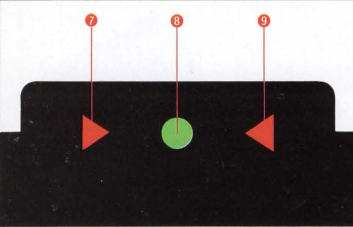 So how did Quick Focus pan out? On the whole...meh. It certainly didn't reverse the SLR slump that really started to bite in the same year of the AL-1's introduction. With production in the 450,000 range from 1982 to mid-'84 (about half that of the AV-1 base model, which was in the lineup for five years: 1979-84) the AL-1 wasn't a flop by any means, but it was no AE-1 Program (which sold over 4 million units in roughly the same time period). By January 1985, the last AL-1s were being blown out for nearly half of their original price ($235 USD; all prices inflation-adjusted to 2022 USD) as Canon sought to unload the last remnants of production. Electronic rangefinders were really just a transitional phase on the way to full-on AF and the market reflected that, with the AL-1, Pentax ME F, and Olympus OM-F (OM-30) all failing to outsell the standard models they were based upon. There were also the very limited-production Yashica FX-A (1982) and Minolta X-600 (1983) both of which bore more than a passing resemblance in the grip, battery door, and mirror areas to the AL-1 when they fell into photo magazine editors' hands (neither was released for general retail). Being right at the start of the development curve for electronic focusing, all of these models had a common drawback of poorer performance in low light situations. While standard meter low-light performance had settled around Exposure Value 1 (equivalent to the amount of light needed for proper exposure at 1 sec. shutter speed @ f/1.4 @ ISO 100), the CCD sensors available in the early-'80s were effective only down to about EV 3.5 - 5, at best (incidentally, the AL-1 was the best of the bunch in that regard at EV 3.5). That meant they needed five to seven times more light than the meter to still function. Which is roughly the difference in the amount of light between a standard daylight scene with full sun and one under full overcast. In other words, more light is your friend with any of those cameras. And you needed a vertical line with decent contrast with the camera held in landscape format (or a horizontal line with the camera held vertically) for Quick Focus to function, which was no different from the manual split-image rangefinder used in most SLRs of the day. Nevertheless, blank walls or reflective surfaces presented obvious difficulties for QF. It must be noted that Canon's execution of the electronic focus confirmation display in the bottom of the viewfinder was excellent (two red LED arrows on either side of a green LED dot that show which way to turn the focus ring until the green dot alone is lit, which Minolta also gratuitously copied in the X-600 ;-)). If the electronic rangefinder cannot achieve focus, the user still has the matte screen to fall back on, so it's not like the AL-1 is useless in low light, but it will depend upon the user's eyesight how easy low-light focusing seems to be. The AL-1 was firmly ensconced in the middle of the A-Series lineup in terms of features and pricing. Let's now take a closer look at how it compared to its two closest relatives.
* Rated AS-IS due to broken battery door. See below for further explanation :-) 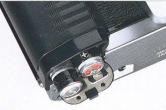 Using the AL-1 Today As noted earlier, I personally find the AL-1 to be the most ergonomic of the A-Series (followed in descending order by the: AV-1 & AE-1 Program, with a big drop-off to the AT-1 & AE-1, and finally the A-1). YMMV :-). The hand grip and light weight (505 grams/17.8 oz with two Energizer Ultimate Lithium AAAs loaded) are substantial advantages for me. The lithium AAAs also improve battery life from 30 rolls of 36 exposures with standard alkalines up to 150 at room temperature, with no leakage issues and even better cold-weather performance. Speaking of batteries, that leads us to the biggest downside of the AL-1: the flimsiest battery door latch of any A-Series SLR. Now that's saying something ;-). I have personally held one...that's right...ONE...AL-1 with a fully functional battery door...EVER. And it was mint and had clearly seen virtually no use. The battery door latch simply is not sturdy enough to handle the spring pressure of the two AAA batteries for any extended period of time (thus the AS-IS rating and pricing at KEH above). Stinkin' bean-countin' Canon does it again! Build a simple, functional camera and then pinch those pennies on the battery door latch (Nikonistas are just loving this ;-)). Fortunately, the solution is simple, if less than elegant: fold a piece of thin cardboard (or thick paper) just undersized to the battery door and then gaffer-tape it shut (with batteries properly inserted, of course ;-)). BOOM...9 times out of 10, you will have a functional AL-1 and for literally a fraction of the cost of an AE-1. I do strongly encourage using lithium AAAs rather than alkalines, as alkalines forgotten in the camera will leak and commit unspeakable atrocities to the innards of the battery compartment and any other circuitry within reach (which not a few AL-1s have already experienced ;-)). Like most A-Series (save for the top-of-the-line A-1), the AL-1 does not display the set shutter speed or aperture values in the viewfinder; only the camera-chosen or meter-recommended shutter speed depending on whether the camera is in "A" mode or Manual. If you want a more comprehensive viewfinder experience in an FD-mount Canon, you will have to look back to the full-size EF, FTb-N, the various F-1s, the A-1, or ahead to the T90. As a consumer-targeted model, the AL-1 also lacks DOF preview (no different than a Pentax K1000, or Minolta X-370) and a PC socket for off-camera flash (very rarely used on 35mm SLRs that do have one ;-)), if those are must-have features for you. As far as outright photographic capability goes, however, the AL-1 gives up virtually nothing to its more-celebrated siblings: the same shutter, same meter, same film transport system, and the same mirror box & chassis. And you can find one in either chrome or black finish to match your preference. Wrap-Up If you are in the market for an A-Series Canon, its hard to argue with the value proposition offered by the AL-1, especially with the current (shall we say...strong?...cough, cough) prices for AE-1s and AE-1 Programs, nowadays. Quick Focus is still viewed with disdain by most modern enthusiasts which, compounded by the crummy battery door latch, has kept values at the lowest of any A-model. If QF is not your cup of tea and you are a proficient manual focuser, you can basically ignore it, but it can be more useful in good light than you might anticipate :-). If you are new to manual focusing or your eyes are not as good as they used to be, the AL-1 is an excellent choice. Battery-door issues aside, powering an AL-1 is less expensive than all of the other 544/PX28L-equipped A-Series, even using AAA lithiums (which will also last far longer than any 6V cell, particularly the alkaline A544 versions). And if you are more inclined toward aperture-priority than shutter-priority in an FD-mount Canon, that's another point in the AL-1's favor. Due to the triple beam-splitter used for the focus confirmation module, a circular polarizer must be used instead of a linear polarizer for QF to function properly if you want to use such a filter on the camera. The best way to snag an AL-1? Buy one with a lens attached. With a busted battery door latch, you will basically get the body for nothing while ending up with a good lens (have you seen what bare bog-standard FDn 50/1.8s are going for nowadays? ;-)), in the worst-case scenario. If you try the gaffer tape trick and it works, you will then have a great little SLR that you can take into sketchier situations without fearing for its safety :-). If you do manage to find a unicorn with an intact battery door, it will usually cost you about what an AV-1 currently does (which is still half that of an AE-1). Then you will put batteries in it...the latch will fail sooner rather than later...and you will end up gaffer-taping it anyways ;-). May as well save yourself the trepidation of waiting for the latch to self-destruct (and a considerable sum of money) and buy a pre-busted one :-). As mentioned previously, beware of corroded battery compartments and make sure that the metal contact plate on the battery door is intact and firmly in place. Personally, I will take the improved ergos, cheaper (and more readily available) batteries, aperture-priority vs. shutter-priority automation, and equivalent build-quality to an AE-1 or AE-1 Program in exchange for a tape-job and more money in my pocket, any day :-). The arrival of the first successful AF SLR (the Minolta 7000) in 1985 signalled the end for half-measures like the AL-1 along with the demise of the A-series as a whole. But just as the recent renaissance of FD glass and the other A-Series bodies have shown, revival is always possible. For an AL-1, all it usually takes is a couple of AAAs and pieces of tape and an SLR that went out with more of a whimper than a bang over 35 years ago becomes a bang-up bargain for those quirky enough to try it ;-). References: Various Canon A-Series User Manuals @ www.butkus/chinon/canon.htm Canon AL-1 Sales Brochure @ www.pacificrimcamera.com Canon AL-1 @ https://global.canon/en/c-museum/product/film106.html Popular Photography April 1982 p.83 Modern Photography's Annual Guide 1983 Canon SLR Production Numbers @ http://knippsen.blogspot.com
4 Comments
10/27/2022 07:37:44 pm
Thanks C.J. Odenbach
Reply
C.J. Odenbach
10/27/2022 08:37:16 pm
Welcome to the addiction, Samuel ;-). And don't be too concerned about the higher-priced "popular" models. There are plenty of under-the-radar examples like the AL-1 to be had on a budget and can provide just as much enjoyment of the hobby. Looking forward to hearing from you along the journey. Best regards.
Reply
Gil Aegerter
2/8/2024 10:54:28 pm
I just bought an AL-1 off of Goodwill in a batch with three other film SLRs, for about $14 each. The image of the bottom of the AL-1 shows an intact battery door -- at least it's there. We'll see if this was a good deal or not.
Reply
C.J. Odenbach
2/9/2024 12:12:50 am
That sounds like a good start, Gil. If the contacts are snugly in place and not corroded, I think your $14 might be well-spent. If there is a bit of corrosion, a few vinegar-soaked Q-tips should take care of it, followed by a couple with isopropyl alcohol to remove the vinegar residue. Please keep us posted and here's hoping it will come to life for you :-).
Reply
Your comment will be posted after it is approved.
Leave a Reply. |
C.J. OdenbachSuffers from a quarter-century and counting film and manual focus SLR addiction. Has recently expanded into 1980's AF point and shoots, and (gack!) '90s SLRs. He even mixes in some digital. Definitely a sick man. Categories
All
Archives
June 2024
|
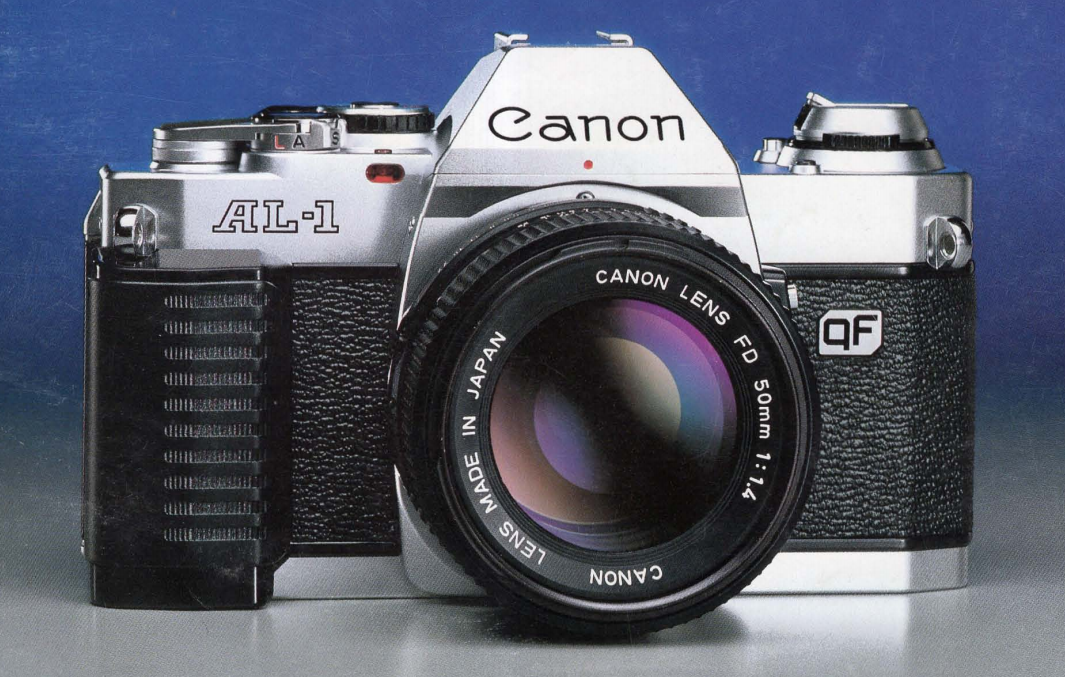
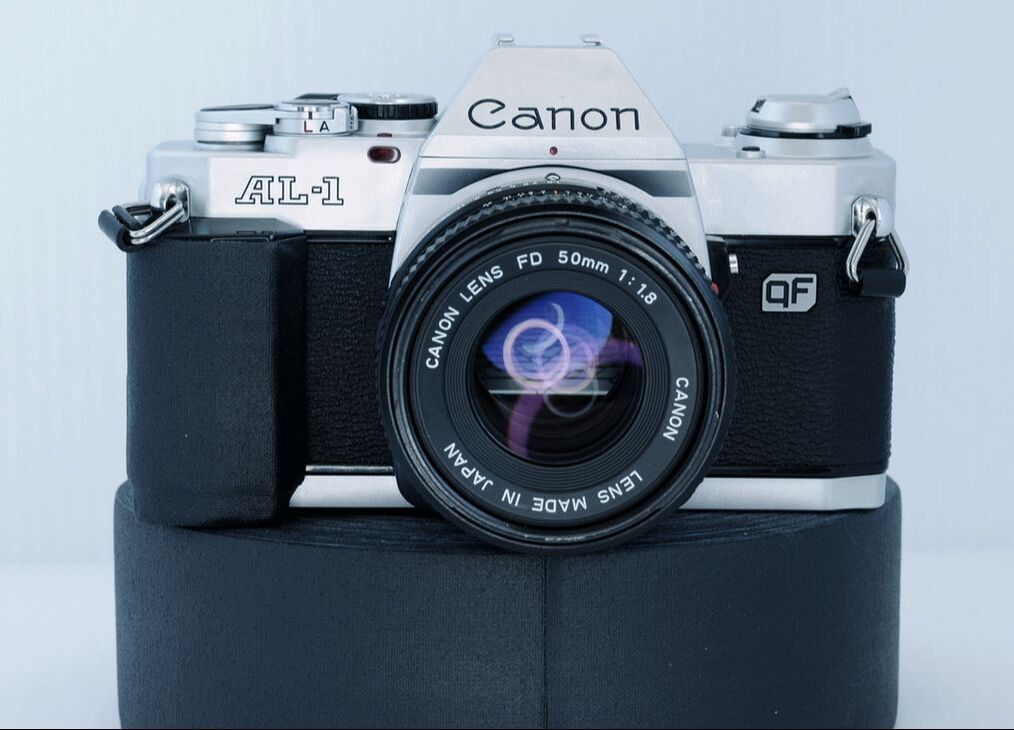
 RSS Feed
RSS Feed